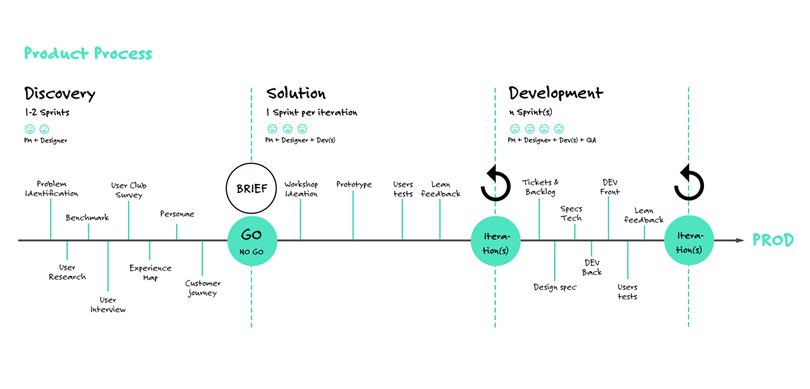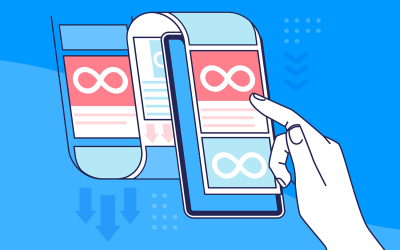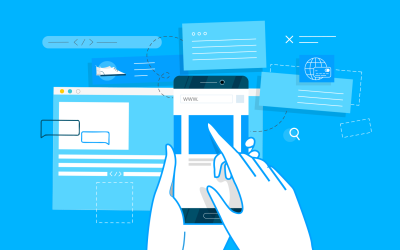UX v product management – everything you need to know to work better with your product team and deliver amazing digital products
User experience (UX) and product management both play an important role in bringing products to market.
Start designing new products today. Unlimited projects!

While these roles are not interchangeable – UX is by no means the same as product management, as you’ll see in this post – there is some overlap. And the fact is, successful product lifecycles require the two to work in sync in order to build and ship successful digital products.
In today’s post we’ll take a look at the differences between UX and product management, as well as show you how and why you should align them in order to improve your product workflow. So if you’re looking for a way to kick that UX v product management angst, read on!
As Stef Ivanov states, when you split product development in two, you get user experience and product management.
The two roles are quite different: user experience deals with the user, while product management deals with the business side. But let’s dig a little deeper.
According to the experts over at the Nielsen Norman Group, UX encompasses all aspects of the end-user’s interaction with the company, its services, and its products.
While there are many different roles within the domain of user experience, all UX practitioners contribute to creating products that provide meaningful and relevant experiences for users.
As the user experience affects every aspect of the product being built, the UX designer is involved throughout the product lifecycle. Essentially, the UX designer designs the start-to-end experience for each product.
The UX design team starts by conducting user research. These moderated or unmoderated tests aim to validate design assumptions specified in the requirements defined at project kick-off. This user research will help the team identify their target audience and create user personas that represent their users, in order to validate their design decisions throughout the product lifecycle.

Next, they will design the user journey and start to sketch out the user interface of their product (e.g. a website or mobile app). Then they’ll create low fidelity wireframes and eventually high fidelity prototypes, with a prototyping tool like Justinmind, to visualize the interface and share their ideas with the rest of the team.
Then, the UX team will test their prototypes out with users in order to gather feedback and optimize their designs around that feedback. They’ll keep refining their designs even after product delivery to make sure that the product is always user-friendly.
Start designing new products today. Unlimited projects!

UX designers require a deep understanding of the end user as well as a great deal of experience design tool and prototyping tools, such as Sketch, Adobe XD and Justinmind.
Having an understanding of the development process, as well as some knowledge of front-end programming languages CSS and HTML, will make it easier for them to work with the development team.
Read more on essential UX designer skills here.
Product management is to organizing as UX is to executing. Digital product managers are responsible for the successful delivery of high-quality digital products, focusing on product success over the entire product lifecycle. Their role involves guiding cross-functional teams in the creation of products, providing deep product knowledge and making strategic product decisions.
As Aha! states, product managers will often analyze market and competitive conditions, laying out a unique product vision that delivers value based on customer demands. The role spans many activities and provides support in many different areas (e.g. research, design, development, launch and expansion).
Through research into the market and competition, the PM sets a product vision and the project’s goals – this is where the UX team’s design assumptions come from.

Then, the PM will define what the product team will deliver and the timeline for product implementation. Often, they’ll create a product roadmap, which helps teams visualize the timeline, prioritize features and track the progress of the project efficiently.
Throughout the project, the PM offers cross-functional advice and leadership to the design, development, sales, marketing and support teams. It’s up to them to keep everyone informed of project progress – hence the importance of the product roadmap.
Digital product managers need extensive knowledge and experience in defining inbound product strategy, as well as outbound product marketing. Aha! describes the PM as an observer, a prophet, a strategist, an accountant, an aligner, a driver, and a fixer.
Remember that ultimately the PM is responsible for the success of their product and that’s why they need to be masters of so many domains. If you want to learn more about product management, why not check out our list of the best free and paid product management courses?
Start designing new products today. Unlimited projects!

So we’ve covered the differences between user experience and product management, now let’s look at where they align.
A common misconception is that UX and product management have nothing in common. That’s simply not true.

A successful product manager describes the problem that the user is having and identifies why solving this problem would be good for business. Regardless of their handle on the business-side, they still need to have deep knowledge of the user.
In a similar way, the UX designer solves the problem described by the PM and finds a solution, based on expert knowledge (and research into) their users and their needs, as well as business goals.
The Interaction Design Foundation suggests that the reason these two roles often clash is because they really ought to be performed by the same people. PMs should be championing and deploying UX to ensure that products are always delivered with their customers in mind.
And remember, it’s not uncommon for UX practitioners to transition into product managers. In fact, there are many skills that aid the transition, such as knowledge of the user, market and design tools and principles. Check out our list of courses to take up if you’re thinking about becoming a product manager.
Apple is a great example of product management and user experience coming together to create great products that users love and keep business afloat.
So how do you achieve Apple-worthy collaboration between UX and product management? The first step towards successful collaboration is in the definition of each role. There’s nothing worse than starting off on the wrong foot, or stepping on someone’s toes because it wasn’t clear who does what to begin with. This is particularly important when it comes to UX v product management, where there are areas of cross-over (such as performing early market research and during the prototyping phase).
Be aware of each other’s strengths. Product managers should be defining the ‘what’ and allowing UX to execute the ‘how’. There are tons of horror stories about power-tripping PMs, but it doesn’t have to be so difficult to get the job done.
The best way to avoid unnecessary high-handedness is by ensuring that the PM defines the strategy and the designer creates features that align with that strategy. At project kick-off, PMs and designers should talk through the product backlog together to see which items should be included in the sprint and which should fall to the end of the list.
Additionally, PMs and UX designers should always communicate! By talking through user flows together and mapping them out in a visual prototyping tool like Justinmind, you can see what solutions like and validate them as a team.
UX and Product Managers can work incredibly well together. Read more on making this possible here.
As Game + UX Designer Dakota Reese Brown reminds us, UX and product management need to work together in the product life cycle in order to deliver a solution that meets business needs while measuring up to user expectations.
Great product managers know that UX is a necessary part of a product’s success, and that a “Me, Myself and I” syndrome is not an effective approach to deliver products to market. Smart UX practitioners allow product management to lend a helping hand in the definition of features, allowing them to get on with what they know best: the design of great digital products.
Having UX and product management collaborate makes good sense. As Experience Design Leader Sarah Deane says: “It is in understanding the different job roles, their intersections, values and accountabilities that you will end up with a great product.”
PROTOTYPE · COMMUNICATE · VALIDATE
ALL-IN-ONE PROTOTYPING TOOL FOR WEB AND MOBILE APPS
Related Content
 Learn how to design better e-learning platforms with user-centered UX principles, real examples, and high-fidelity prototyping tips to boost engagement and learning outcomes.13 min Read
Learn how to design better e-learning platforms with user-centered UX principles, real examples, and high-fidelity prototyping tips to boost engagement and learning outcomes.13 min Read Infinite scroll keeps users engaged, but it’s not always the best choice. This guide breaks down when to use it, when to avoid it, and how to design it right.14 min Read
Infinite scroll keeps users engaged, but it’s not always the best choice. This guide breaks down when to use it, when to avoid it, and how to design it right.14 min Read Learn how to design web and mobile app prototypes, how to test them and what to look for in a prototyping tool in this complete guide.15 min Read
Learn how to design web and mobile app prototypes, how to test them and what to look for in a prototyping tool in this complete guide.15 min Read


